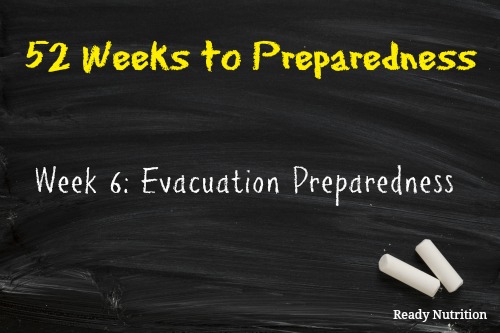
Having a pre-assembled bag with basic survival needs in place will expedite the evacuation process, as well as keep things running smoothly. The main goal of having a 72-hour bag is to be equipped to survive for three days. Therefore, keep your basic survival needs in mind: food, water, shelter, clothing, sanitation, medications/prescriptions. In addition, I would also pack some extra emergency money or a credit card with enough money for gas and lodging in case you run into a monetary issue. Click here to get more details on preparing a 72 hour bag.
Preparing a bag for evacuations takes more time than one would think. Taking survival needs into account is one thing, but trying to collect prescriptions, children’s special items, and personal documents can be frustrating if you were under time constraints. Preparing ahead of time for evacuations will cut down on the headaches, and keep you one step ahead.
Preps to buy:
- Backpacks for each member of the family (make sure the backpack has multiple compartments and pockets)
- Water containers for each family member. Alternatively, you can purchase water containers with filtration devices inside them.
- Water purification tablets
- Food for three days (remember foods that are lightweight and high in calories)
- Mylar blankets or bivvy for each member of the family
- Tent, tarp or some sort of alternative shelter
- Season appropriate clothing (3 days worth)
- Fire starters
- Waterproof matches and Bic lighters
- Charged cell phone or alternate communication
- Maps of the city and state (if you have not already purchased)
- Flash lights for each bag with extra batteries
- Mess kit and utensils for each family member
Don’t forget to pack items for pet needs. In additions, some other items to include in your evacuation packs are a first aid kit, hygiene items (toilet paper, deodorant, feminine products, shampoo/soap), and personal documents.
As well, pack a get home bag and store it at the office or in your vehicle in case you are stranded.
Action Items:
1. Create an evacuation plan including an emergency meeting area for family members, multiple evacuation routes, a list of emergency phone numbers. Having this checklist on hand will keep an evacuation as organized as possible.
2. Assemble evacuation packs.
3. Place packs near an emergency exit or in an easy to access area.
4. As a family, discuss the evacuation plan, and include a discussion on the protocol and emergency exits.
This article was originally published at Ready Nutrition™ on June 3rd, 2011







Practice using your firestarter. It’s not as easy as you think 😉
Google worthless chinese fire starters.